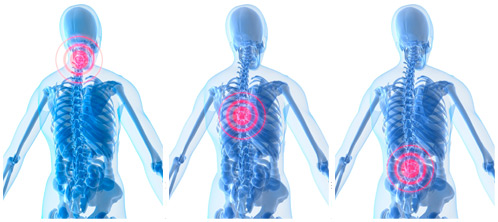Trigger Points for Pain Management
Trigger points are small, painful knots in your muscle or fascia that cause a great deal of localized or referred pain. Trigger points develop from a variety of causes, including:
- Muscle injuries
- Poor posture
- Repetitive strain
- Computer use
- Stress
- Spine conditions
- Herniated disks
Our muscles have over 620 potential trigger points. Despite all of the different causes for pain in these trigger points, everyone develops these points in an identical fashion. This allows physicians like Dr. Kerendian to have a solid understanding of the location of each of these points in every individual patient.
I heard about Delight Medical through living social. I started coming in for prolotherapy and I would highly recommend it for athletes. I’m a runner and it’s helped me with a hip injury. It’s helping to strengthen my hips so I can get out there and run again. It’s also helpful in my jaw for TMJ; I would highly recommend this treatment for people that suffer from TMJ. I’ve tried a lot of different things and this has been very helpful.
I’m also doing the trigger point therapy, which is really great for people that carry a lot of stress in their upper back area, which is what happens to me, and it helps relax things when massages and other things don’t work. I would highly recommend that as a great way to release stress. I like coming here because when I leave I feel a lot better.
Wendy
There are several different classifications to trigger points:
- An Active Trigger Point refers to a point that actively causes pain either locally or remotely along the nerve pathways.
- A Latent Trigger Point is one that is present but is not actively causing pain. A latent trigger point may cause pain when pressure or strain is applied to the particular spot it is located at, even though it will otherwise not cause discomfort.
- A Key Trigger Point causes remote pain along the nerve pathway. By initiating pain in remote places, a key trigger point could cause pain to develop at latent trigger points.
- A Satellite Trigger Point refers to a point that is not at first active, but becomes activated remotely by a key trigger point. Often, when the key trigger point is successfully treated the satellite point will also be relieved.

For many patients, the pain associated with trigger points can be treated with Trigger Point Injections (TPI). During the TPI procedure, Dr. Kerendian will insert a small needle that is about the size of an eyelash into the aggravated area. The needle is used to inject a specially created anesthetic into the trigger point. The injected solution is 100% customized so to be tailored to each patient’s individual needs. The solution acts by making the trigger point inactive, which eliminates all of the associated pain.
TPI is an effective mode of treatment for chronic and acute pain that is caused by trigger points. In fact, 90% of the patients that receive TPI treatment feel immediate relief after the injection, and 99% experience an improvement or reduction in the severity of their pain. The TPI procedure can be done in your physician’s office in a matter of minutes, and multiple trigger points can be treated during a single session.
A majority of health insurance companies in the United States often cover this procedure when performed by Dr. Kerendian, including Blue Cross and Blue Shield, Anthem, Aetna, Cigna and United Healthcare, in addition to other PPO insurance companies. This is because Dr. Kerendian is a specialist in the field of pain management and therapy.
If you would like more information regarding treatment for trigger points in Los Angeles or Bakersfield, contact us to schedule an appointment with Dr. Kerendian.



